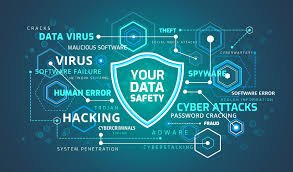Cybersecurity for Small Businesses: Facing Global Threats in a Digital Age
Cybersecurity might sound like a problem just for big corporations, but small businesses? They’re the new favorite target. These businesses often have fewer defenses, less money to spend on protection, and they usually underestimate how much they’re at risk. That’s exactly what cybercriminals love. And in a world where everything’s connected—across borders, across devices, across industries—the threats keep getting more serious. Small businesses aren’t just in danger of losing money. They can lose customer trust, important data, and even their ability to keep the doors open.

Why Small Businesses?
Think about it. A local café that takes online orders. A small accounting firm that handles client tax documents. Or a tiny online shop that sells handmade crafts and stores customer info. Every one of these is a goldmine for attackers. Why? Because they often don’t have strong firewalls, complex systems, or dedicated security staff. A single employee clicking a bad link or using a weak password can lead to a data breach.
According to recent surveys, over 40% of small businesses experienced some kind of cyberattack in the last year. That number is climbing. And most of those businesses didn’t even know they were hit until after the damage was done.
The Global Landscape of Threats
We live in a world where hackers can live in one country and attack businesses in another—no passport required. Attacks don’t stop at the border. Some of the most common global threats include:
- Phishing Attacks: These are fake emails or texts that trick people into clicking links or giving out private info. They look real—sometimes even from someone inside the company.
- Ransomware: A type of malware that locks down your system or files until you pay a ransom. And even if you pay, you’re not guaranteed to get your data back.
- Supply Chain Attacks: Small businesses often work with vendors, contractors, and partners. Hackers use these relationships to sneak into systems.
- Botnets and DDoS Attacks: Hackers use infected devices from around the world to flood your website with traffic until it crashes.
- Password Attacks: Still using “123456” or “password”? Hackers use tools that try thousands of combinations in minutes.
The scary part? These attacks are getting more advanced. Hackers are using machine learning, automation, and even fake audio to pretend to be someone else.
Real-World Impact
In 2021, a small U.S.-based fuel supplier was forced to shut down operations due to a ransomware attack. Not only did they lose hundreds of thousands of dollars, but the ripple effect was national. Prices jumped. Deliveries stopped. And even bigger businesses were left scrambling.
Then there’s the story of a small law firm in the UK. One bad email led to stolen case files and a huge legal mess. Clients left. Lawsuits followed. The firm shut down.
These aren’t rare. They’re just not always public.
Why Global Threats Matter—Even Locally
A small business in Texas can get hit by a hacker in Russia. A florist in Australia can lose access to her customer list because of malware that came through a supplier’s email from Asia. It’s not about geography anymore. It’s about weak links. Any device, any connection, any employee mistake—those are the doorways hackers look for.
Cybercriminals often work in groups, sometimes backed by governments. These aren’t just teenagers in basements. They’re professionals. With training. With goals. With strategies.
What Can Small Businesses Do?
It doesn’t take a huge budget to start getting safer. What matters is being consistent, alert, and proactive. Here are some real steps that make a difference:
- Train your staff – Most attacks start with a person making a mistake. Teach your team to spot sketchy emails, links, and fake websites.
- Use strong, unique passwords – No repeats. No dictionary words. And two-factor authentication should be standard.
- Keep software up to date – Hackers love old programs because they have known weaknesses. Updates fix those.
- Back up your data – Keep copies somewhere safe. Offline or in secure cloud storage.
- Invest in basic security tools – Firewalls, antivirus software, and encryption tools aren’t just for the big guys.
- Limit access – Not everyone needs access to everything. The more open your system, the more ways in.
- Get insurance – Cyber insurance helps when all else fails. It won’t stop attacks, but it can help you recover faster.
The Role of Governments and Global Collaboration
Governments are starting to wake up to the risks small businesses face. Some offer grants, resources, or free security tools. International efforts are growing too, with task forces and information-sharing across countries. But it’s not enough. Businesses have to take charge of their own safety too. Hoping to stay under the radar isn’t a plan.
Looking Ahead
Threats will keep changing. Attackers will get smarter. But small businesses can’t afford to be passive. Every year that passes without protection raises the risk.
It’s not about creating a fortress. It’s about putting up enough defense to make hackers move on to an easier target. Most attackers want quick wins. If you make their job harder, you’ve already done more than many others.
Cybersecurity doesn’t have to be overwhelming. Start small. Build smart. Stay alert.
Final Thought
Running a business is hard enough without worrying about cybercrime. But ignoring the risk won’t make it disappear. Small businesses are more connected than ever, and that means their risk is global—even if their footprint is local. Take simple steps. Build habits. Protect what matters.




